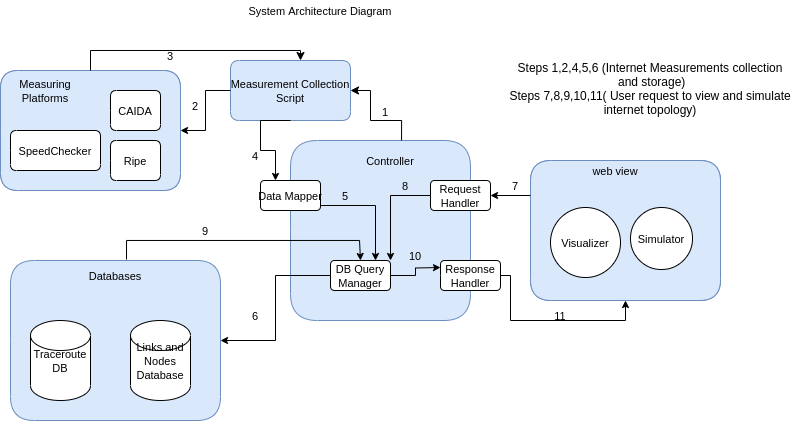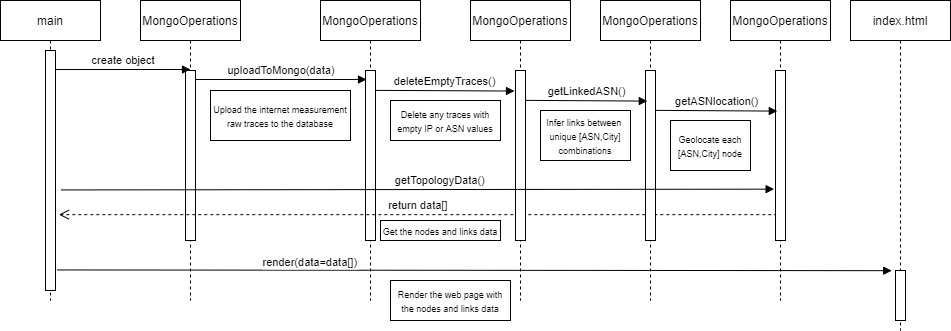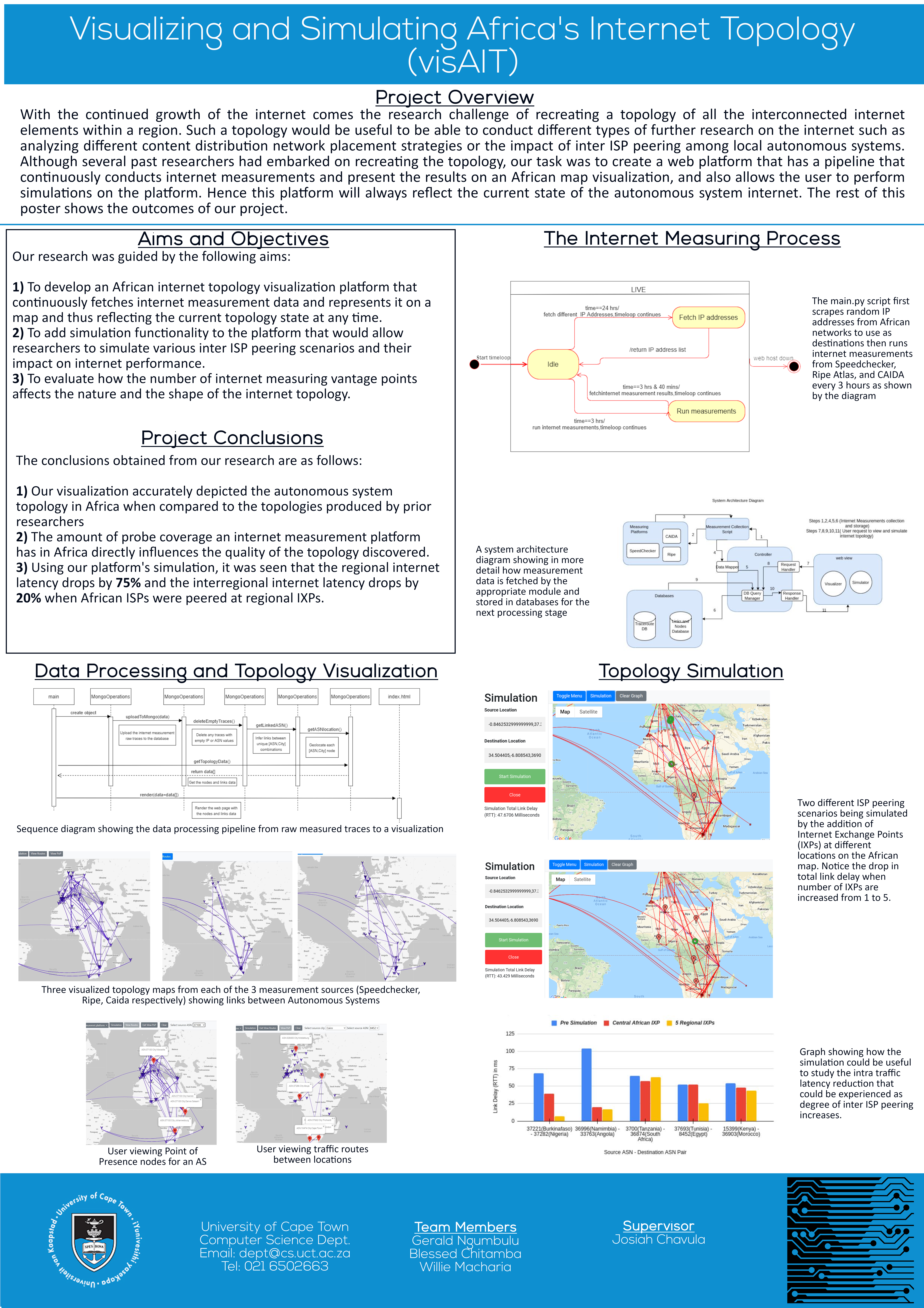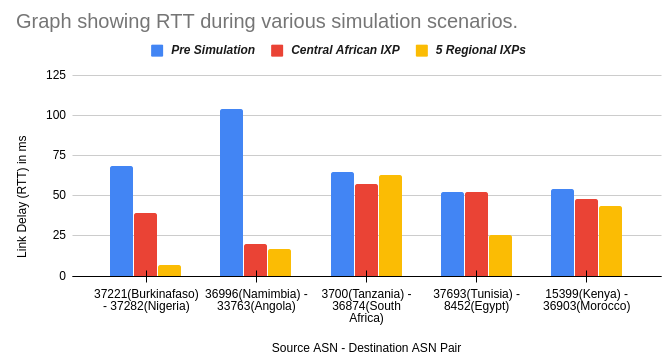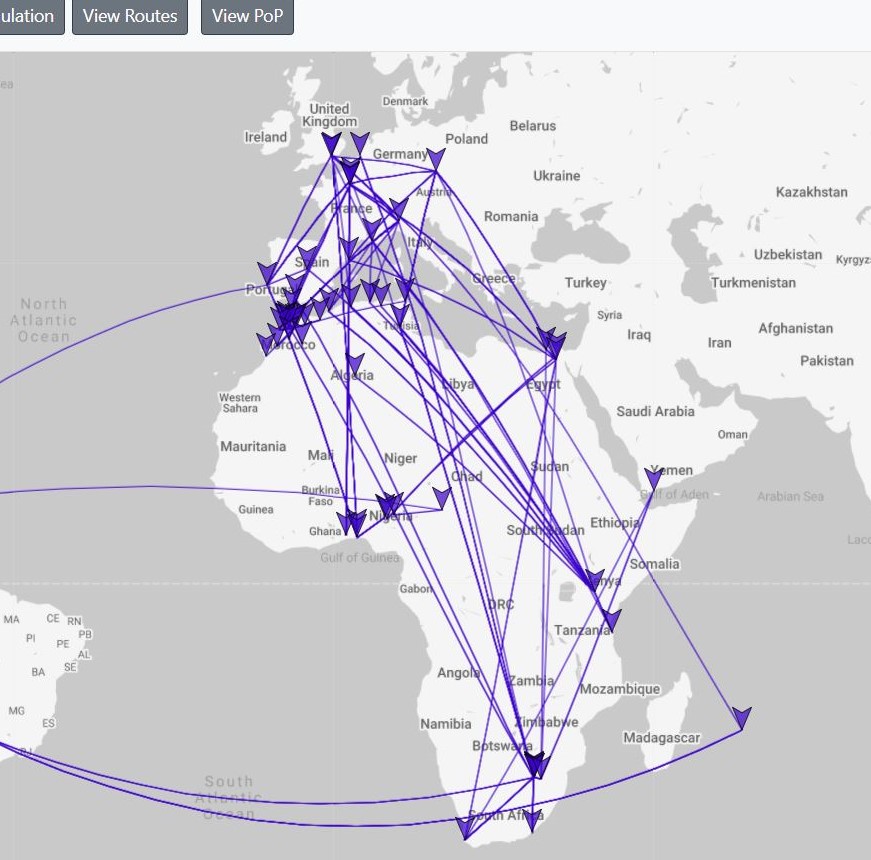
Visualizing and Simulating Africa's Internet Topology
Simulating Africa's Internet Topology
Talk to us
No meetings are currently scheduled.
Internet traffic originating from Africa and destined to Africa has been characterized by high latency. This has been due to the circuitous paths the intra-continent traffic follows. Many internet researchers have recommended that to solve this challenge, various African ISPs need to peer at local African IXPs. However, the question that arises from this recommendation is what is the best way the African ISPs can peer at local African IXPS and offer the best internet performance. The solution to this question is to first map the existing African internet topology and then perform topology simulation to evaluate the performance of various routing and peering scenarios.
The problem being addressed is that in the internet research space there lacks a unified platform with built-in functionality to regularly collect internet measurement data, process it, and represent it on a map visualization with nodes representing Autonomous Systems and links representing the relationships between them. The key
distinguishing feature about such a platform would be that it always reflects the current state of the internet topology at any point in time, according to the most recent measurements received. This would then allow researchers who intend to perform studies that involve the internet topology to carry out their research without having to perform their own internet measurement and topology visualization campaign, as the platform would be giving them the information they need.
Images
